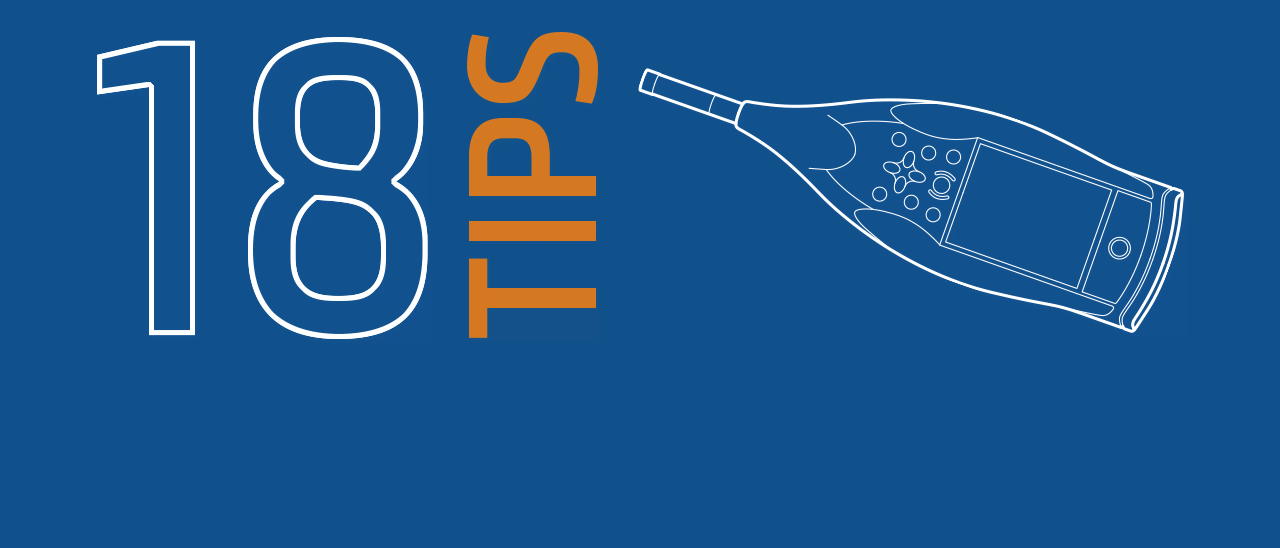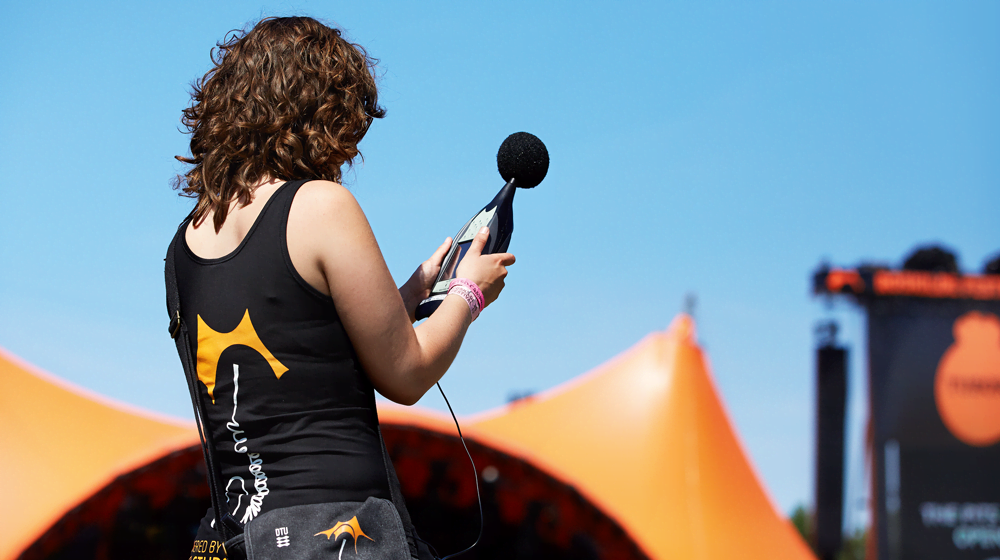 BUYERS GUIDE
BUYERS GUIDECHOOSING YOUR NEW SOUND LEVEL METER
THE ULTIMATE SOUND MEASUREMENT CHECKLIST
Setting up your sound level meter before embarking on a measurement project will save you time and maybe even rework. Here are seven things to remember to check on your sound level meter before heading out on a project:
SYNCHRONIZE TIME ON YOUR SOUND LEVEL METER
During most measurements, you will be taking notes on events that are relevant to the report, often noting event times from your watch or phone. It’s important that the time on your sound level meter matches your timepiece, so that your notes match the recordings on the sound level meter. This becomes even more important when using two or more sound level meters.
SETUP MEASUREMENT INTERVAL
Some standards and regulations dictate specific measurement intervals. If your sound level meter supports logging at multiple time intervals (called logging and report periods on a B&K Sound Level Meter), consider setting the report period according to the standard’s requirements, and a shorter time for the logging period. This way, you combine the convenience of directly measuring the values for your report, with the ability to investigate and correct short disturbances. This can make life a lot easier when you start writing your report.
CHECK STORAGE CAPACITY FOR MEASUREMENTS
This is a pretty basic point: Remember to check that you have enough free space on your memory card for the measurements you are about to make. Regularly deleting old measurements after they have been safely downloaded and stored, is a good habit to keep, as is keeping a spare memory card packed with your sound level meter.
RECORD AMBIENT SOUND
Sound recordings can be invaluable when post-processing your measurements, for identifying noises or performing detailed analyses like FFT-based tonality assessments. If your sound level meter supports sound recording, make sure to set it up to measure at the right resolution and sample rate for your needs. It should be noted that audio recorded with automatic gain cannot be used for analysis afterwards.
SETUP WEIGHTING AND BANDWITH FOR YOUR MEASUREMENT
It is best to make sure that you measure the right frequency weighting and bandwidth for frequency analysis. While it is common practice to post-weight spectra, or to combine 1/3-octave bands into 1/1 octaves, there are potential pitfalls to both. Post-weighting can introduce significant errors when there are strong tones far from the centre frequencies. And while summing 1/3 octave bands works well for Leq data, it is not valid for many other parameters, like statistics or even Lmax or Lmin.
BE CAREFUL WITH MEASURING LOW FREQUENCIES AND WIND
Measuring with an extended low-frequency range can increase the effect of wind-induced noise in your measurements, particularly those made with the Z frequency weighting. So only include extended low frequency when very low frequency noise is relevant.
Aside from the checks you should perform on your sound level meter before conducting measurements, there are certain accessories that are almost always necessary:
CALIBRATED SOUND MEASUREMENT
A sound calibrator, such as B&K Type 4231 Sound Calibrator, might be the most essential accessory for the job. For almost all measurement standards, you need to calibrate your sound level meter before and after each series of measurements.
WINDSCREENS AND MEASUREMENT ACCURACY
You should always use a microphone windscreen for outdoor measurements. When using a windscreen, make sure that the sound level meter corrects for its influence on measurements. Some sound level meters can detect and correct for windscreens automatically. for outdoor measurements.
USE A TRIPOD FOR MEASURING
Tripods are used so that you don’t disturb the sound field with your body or your movements. Use any good microphone tripod or sound level meter tripod with the microphone attached. If the microphone is connected to the sound level meter by cable, use an extension rod to be sure that your measurements are correct and that you or your tripod do not interfere with measurement.
IDENTIFY YOUR EXACT MEASUREMENT LOCATION
You will often need to measure at locations that are unfamiliar to you, and some locations such as undeveloped construction sites may not even have addresses, but coordinates. Bringing a handheld GPS device or smartphone can help you find the site – as well as being a great way of documenting your measurement locations. Sound measurements are not very useful if you do not know where they were taken!
TAKE NOTES OF YOUR MEASUREMENT CONDITIONS
Many sound level meters come with some form of built-in note taking feature, but a pen and paper are still useful for taking notes during measurements, or for making drawings. Survey sheets can also provide useful reminders for tasks like pre- and post-survey calibration checks.
TAKE PICTURES OF YOUR MEASUREMENT CONDITIONS
Photos are often necessary to document your measurement setup, so a camera or a smartphone is important. And if someone wants to repeat the measurement, photos are essential.
COUNT TRAFFIC FOR ROAD NOISE MEASUREMENTS
When doing measurements on road traffic noise, you may need to know the number of cars. In this case, you should bring either an automatic traffic counter or a handheld manual counter.
NOTE YOUR MEASURING DISTANCE TO REFLECTIVE SURFACES
Sound levels can vary dramatically according to the distance from sound sources or reflecting surfaces. A measuring tape or a laser rangefinder can be used to measure these distances, ensuring that you place your sound level meter or microphone in the correct position.
REMEMBER TO BRING BATTERIES
This may seem like a no-brainer but be sure to charge your batteries the day before going out on a job, and remember to bring a spare, charged battery pack. If you expect to be out for more than a normal working day, bringing a mains power supply is a good idea.
REMEMBER TO BRING A LIGHT
For night-time measurements, you need to see where you are going and what you are doing, to prevent injury and make your life easier. A headlamp gives you free hands to work.
BRING YOUR PHONE FOR ANY QUESTIONS
When in the field, you might need to clarify specifications or have questions that need to be answered. A phone and the contact information for key people can be invaluable to get the job done.

DON'T FORGET CLOTHES, FOOD - AND PLENTY OF COFFEE
When doing measurements outdoor, it is important to be comfortable in any kind of weather. Check the forecast and remember to bring gloves, rain gear, a hat, boots, warm socks, sunscreen lotion and insect repellent as necessary. Also, you will need food, snacks and beverages to keep up your energy. A thermos of coffee can save the day when you are out for a while.






















